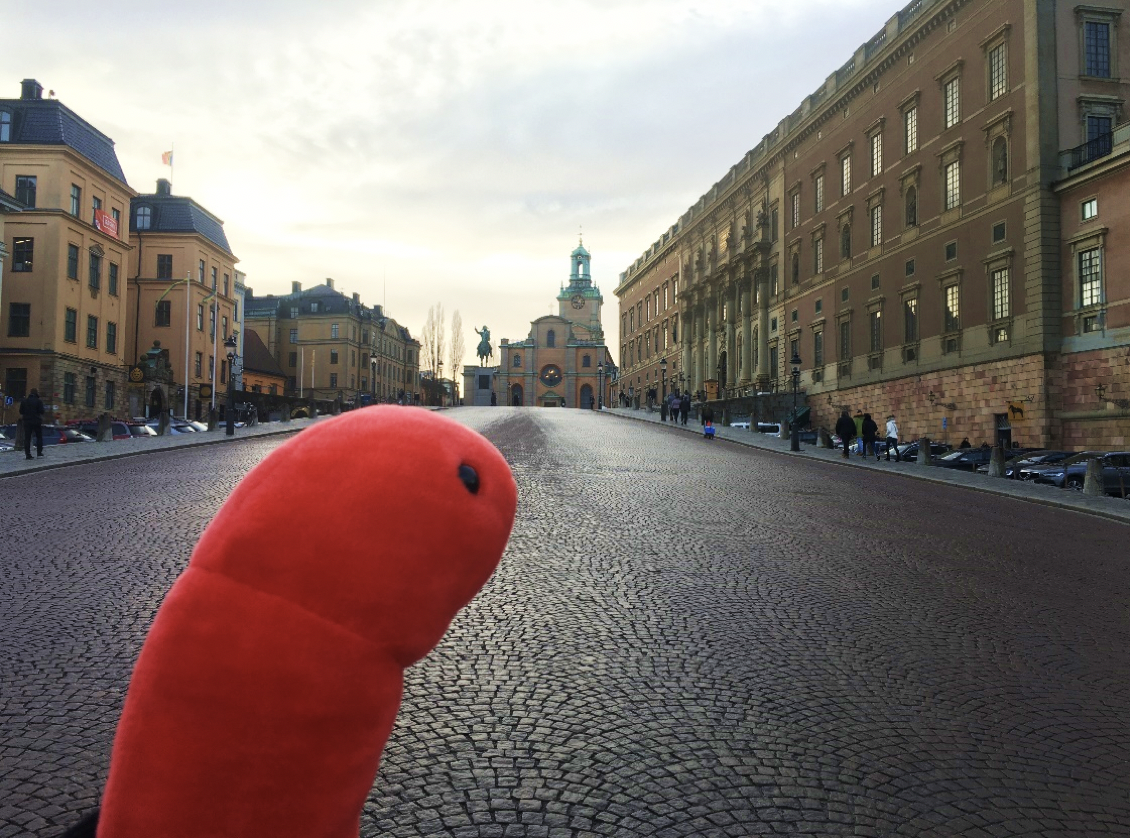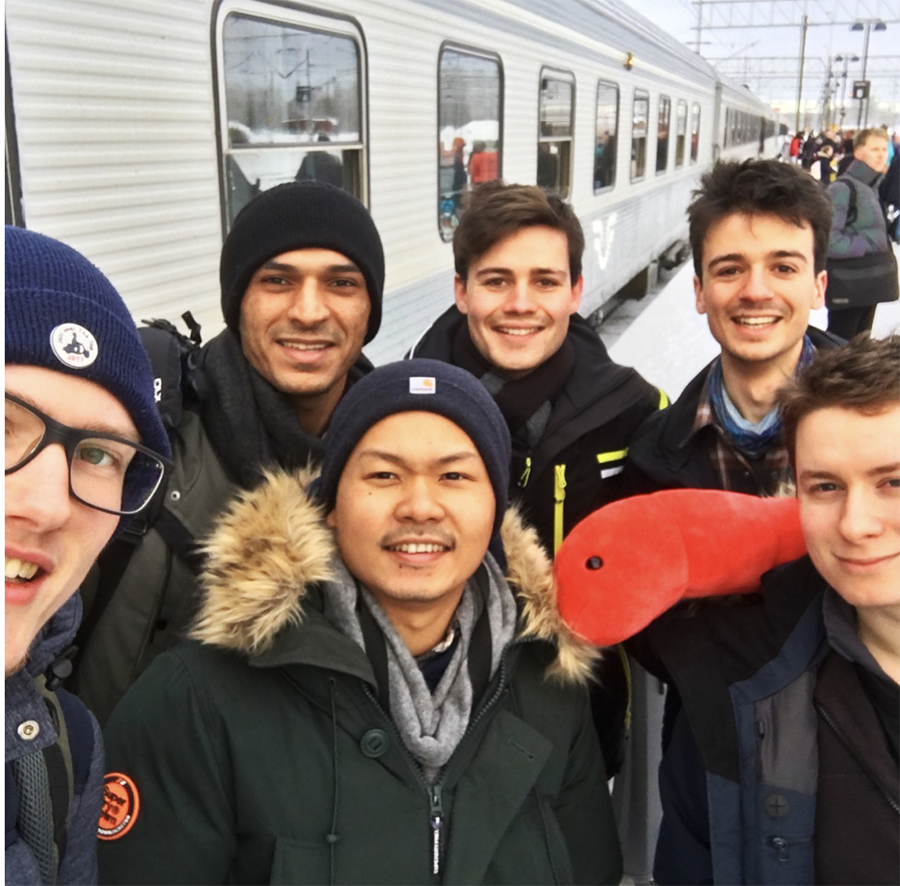Cranfield and Exeter’s journey to Esrange Space Center in Sweden for the BAMMsat project
28/02/2020

Header image: A beautiful aurora for our last day at Esrange.
We are a team BoB (BAMMsat-on-BEXUS). Thanks to the REXUS/BEXUS programme, we will be launching a version of Cranfield bioCubeSat programme called BAMMsat. Thanks to the REXUS/BEXUS student program, organised by a bilateral agreement between the Swedish National Space Agency (SNSA) and the German Aerospace Center (DLR) we can fly our hardware on a high-altitude balloon this October at Esrange Space centre in Sweden. This is a continuation of our last blog on the selection of the project at ESTEC, the technical centre of the European Space Agency (ESA) in the Netherlands. https://blogs.cranfield.ac.uk/aerospace/cranfield-and-exeters-journey-to-the-european-space-technology-centre-estec
A quick recap about BAMMsat-on-BEXUS.
Our objective is to increase access to space for biology researchers by providing a cheap and reliable platform to perform biological experiments in space. Researchers could run experiments on complex life forms such as C. elegans worms or human cells culture for example. Currently, with BAMMsat-on-BEXUS, we are aiming to perform a technology and operation demonstration of a CubeSat to show to the science community the possibilities of such a platform.
After the selection at ESTEC, the next phase of the project was the Preliminary Design Review (PDR) that took place between the 10th and 14th of February at Esrange Space Centre in Sweden. Our preliminary design was reviewed by a panel of experts. We also had a full week of training alongside other teams of students from all over Europe. For the review, we looked in more detail about the technical and financial feasibility of the project. We have looked at the compatibility of our technology and our launch vehicle: the BEXUS30.
Because of our biological payload (living organisms) we have a lot of pre-flight operational requirements and constraint. Due to that, we have to carefully plan our launch campaign operations i.e., before the launch, the shipment, the growth of the worms, the implementation and the wait time before launch. This can be quite complicated and difficult to manage especially when the biological samples need to be kept a specific temperature.
We came back from Esrange with excellent feedback and precious help to boost the design for the next phase of the program. Honestly, this program is excellent! If you have the opportunity to participate in that program, DO IT! They expect us to develop high-quality experiments, we get to meet executives from different space agencies and space-related companies, we get to launch in an actual European Ground-based Station. This is just an exceptional opportunity for students all over Europe to gain incredible experience and insight into space mission development and operations.
It is an astonishing amount of work, especially for a small team of seven like us. Still, the experience is gratifying, and we are preparing now for the Critical Design Review (CDR) this May at ESTEC in the Netherland again. After CDR, the design will be fixed, and we will start assembling and meticulously testing our system.
A quick resume of the fun part: Esrange Space centre is beyond the Arctic Circle in Sweden, and it is beautiful! We have seen Aurora Borealis, learned how to do an Arctic tea party, skied at night around the balloon launch pad of the station, raced reindeers and enjoyed the food of the great canteen before relaxing in the sauna of the hotel. We told you, if you have the opportunity to participate in the REXUS/BEXUS program, don’t think twice.



You can follow our adventures on Instagram https://www.instagram.com/bammsat_on_bexus/?hl=en and twitter https://twitter.com/bob_ze_wormnaut. If you want more information you can visit our website bammsat.com and contact us.
Thanks to the sponsors of this program:
REXUS/BEXUS student program, DLR, SNSA, ESA, SSC, ZRAM and MORABA
The UK Space agency who are currently looking into helping us financially.
Cranfield University with Professor David Cullen and the University of Exeter with Dr Tim Etheridge for funding and supporting us.
BoB team: Aqeel Shamsul, Giovanni Sinclair, Adrien Bolliand, Mike Cook, Amin Chabi, Mateusz Zalasiewicz, Miguel Martinez De Bujo.
Categories & Tags:
Leave a comment on this post:
You might also like…
Keren Tuv: My Cranfield experience studying Renewable Energy
Hello, my name is Keren, I am from London, UK, and I am studying Renewable Energy MSc. My journey to discovering Cranfield University began when I first decided to return to academia to pursue ...
3D Metal Manufacturing in space: A look into the future
David Rico Sierra, Research Fellow in Additive Manufacturing, was recently involved in an exciting project to manufacture parts using 3D printers in space. Here he reflects on his time working with Airbus in Toulouse… ...
A Legacy of Courage: From India to Britain, Three Generations Find Their Home
My story begins with my grandfather, who plucked up the courage to travel aboard at the age of 22 and start a new life in the UK. I don’t think he would have thought that ...
Cranfield to JLR: mastering mechatronics for a dream career
My name is Jerin Tom, and in 2023 I graduated from Cranfield with an MSc in Automotive Mechatronics. Originally from India, I've always been fascinated by the world of automobiles. Why Cranfield and the ...
Bringing the vision of advanced air mobility closer to reality
Experts at Cranfield University led by Professor Antonios Tsourdos, Head of the Autonomous and Cyber-Physical Systems Centre, are part of the Air Mobility Ecosystem Consortium (AMEC), which aims to demonstrate the commercial and operational ...
Using grey literature in your research: A short guide
As you research and write your thesis, you might come across, or be looking for, ‘grey literature’. This is quite simply material that is either unpublished, or published but not in a commercial form. Types ...






